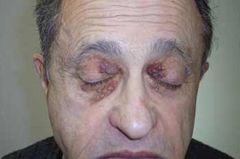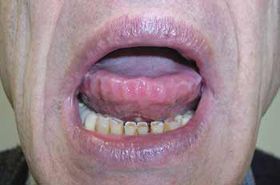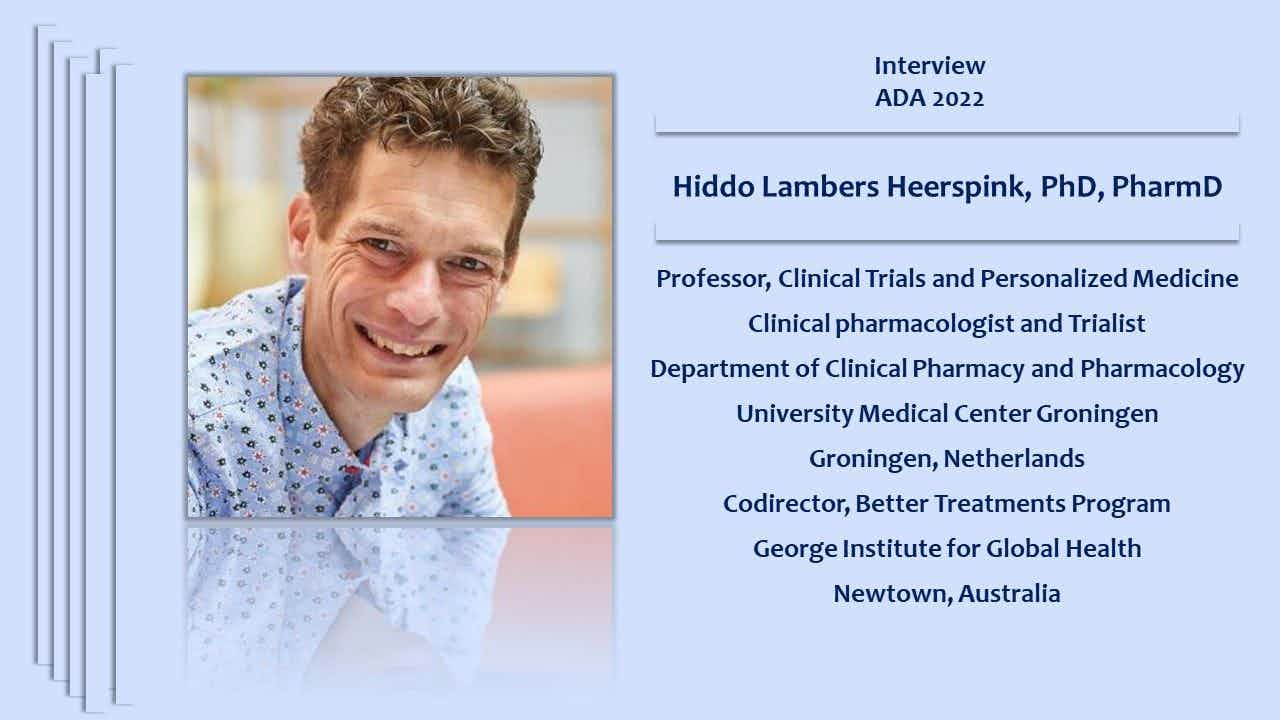65-year-old man with nonpruritic yellowish lesions on his eyelids
A 65-year-old man consults his primary care physician because of concern about nonpruritic yellowish lesions on his eyelids. He says they have been present for the past few years but have recently become more numerous.
This article was originally presented as an independent educational activity under the direction of CME LLC. The ability to receive CME credits has expired. The article is now presented here for your reference. CME LLC is no longer responsible for the presentation of the article.

The Case
A 65-year-old man consults his primary care physician because of concern about nonpruritic yellowish lesions on his eyelids. He says they have been present for the past few years but have recently become more numerous.
History includes nonischemic cardiomyopathy with an ejection fraction of 10%; status post aortic valve replacement and mitral valve annuloplasty; sick sinus syndrome requiring a biventricular pacemaker; stroke; and hyperlipidemia. Has dyspnea on minimal exertion but today has no chest pain, edema, dizziness, or light-headedness. Reports no weight loss, arthralgias, or muscle weakness. Medications include furosemide, spironolactone, digoxin, carvedilol, atorvastatin, warfarin, and sertraline.
More History/Physical
Blood pressure, 90/60 mm Hg; heart rate, 70 beats per minute. Eyelids as shown. The lesions feel soft and doughy. Decreased breath sounds in left base. Grade 2/6 systolic murmur at base. No hepatosplenomegaly. No skin lesions except those near the eyes.
Laboratory Findings
Hematocrit, 41%; blood urea nitrogen, 30 mg/dL; creatinine, 1.1 mg/dL; total cholesterol, 138 mg/dL; low-density lipoprotein cholesterol, 76 mg/dL; high-density lipoprotein cholesterol, 42 mg/dL; triglycerides, 99 mg/dL.
What's Your Diagnosis?
• Amyloidosis
• Blepharitis
• Dermatomyositis
• Multiple Syringomas
• Xanthelasma(Answer on next page.)

The correct diagnosis is Amyloidosis On The Skin And In The Mouth
This man clearly had a host of life-threatening difficulties that initially, at least, seemed unconnected to his eyelid lesions. On a follow-up visit, macroglossia was noted, as well as the oral-phase dysphagia and dysarthria that it produced. New reddish purple discoloration of some of the eyelid papules (Figure 1) had appeared. In fact, our photo shows the patient at this later point. No image from the earlier period, when the lesions were devoid of ecchymosis, is available. This "staining" of the lesions, in conjunction with the macroglossia (Figure 2), aroused suspicion of a systemic disorder such as amyloidosis.1-3 A biopsy of salivary gland and lip tissue revealed a large collection of amyloid globules, which confirmed the diagnosis.
Case DiscussionNumerous Possibilities Considered
The most likely diagnosis for the eyelid lesions was initially xanthelasma.1,2,4 These are soft, polygonal yellow-orange to tan papules and plaques localized to the upper eyelids (less commonly found on the lower lids as well), particularly around the inner canthus. Histologically, xanthelasmas are characterized by the accumulation of xanthoma cells, which are macrophages stuffed with droplets of liquid.
Well-controlled dyslipidemia does not exclude xanthelasma. In persons older than 50 years, xanthelasmas may or may not be related to hyperlipidemia. The LDL elevation seen in some persons who have xanthelasmas may represent the coexistence of 2 common and etiologically unrelated processes. Of course, a markedly increased LDL level can signal familial hypercholesterolemia or dysbetalipidemia and the need for intense lipid control. Apart from concerns about dyslipidemia implications and cosmesis, xanthelasmas are seldom worrisome. They can be treated with laser surgery, excision, electrodesiccation, or topical agents.
The next leading contender, early on, was multiple syringomas, because of the character of the papules and their localization. Syringomas, which usually appear in groups, are benign adenomas of the eccrine ducts. They consist of firm 1- to 2-mm skin-colored or yellow papules. They occur most frequently around the eyelids; they may also be found in the axillae and on the face, umbilicus, upper chest, and vulva. Their diagnostic histologic pattern of small ducts in the dermis with comma-like tails resembles tadpoles. These lesions are easily removed with electrosurgery. This patient's individual lesions look a bit large for syringomas.
A third prospect was briefly considered: swollen, dusky, and reddened eyelids are sometimes observed unilaterally or bilaterally, and with or without a subjacent conjunctivitis, in ordinary blepharitis. Viruses, bacteria, allergy, and irritation can all play a role. However, the kind of spotty purple discoloration observed here, and the raised focal lesions, took this contender out of the running early and definitively.
Suspicion and Macroglossia
Once a systemic disorder was suspected, dermatomyositis was considered, because of its characteristic periorbital heliotrope erythema sparing the bridge. The purple discoloration of dermatomyositis sometimes coexists with local edema. Patients with this condition may also have erythema on the upper chest and neck and Gottron papules on the dorsa of the hands and fingers. When muscle is involved-ie, when the case is in the polymyositis part of the dermatomyositis-polymyositis complex or spectrum-proximal muscle weakness and elevated creatine kinase and aldolase levels in the serum reflect damage to skeletal muscle. The absence of these features does not conclusively rule out the complex. However, because dermatomyositis could not account for either the papular lesions of the eyelids or the macroglossia, diagnostic attention was turned in another direction.

Macroglossia raises its own differential diagnosis, which includes not only amyloidosis5 but also acromegaly6 and gigantism (ie, both forms of intrinsic growth hormone excess); trauma with intralingual hematoma7; hypothyroidism (presumably from accumulation of myxedema material); and macroglossia ex vacuo, which occurs when a long-term edentulous state fails to provide the normal constraint against lingual enlargement. When the enlarged tongue presses against teeth, it can assume imprints or indentations on the edge that produce a serrated appearance (Figure 2); this is called serratoglossia.8
What about lupus and Sarcoidosis?
Systemic lupus erythematosus, although not generally associated with macroglossia, is often a prime suspect in a puzzling systemic or multisystem disorder. It can produce, as a first manifestation, a butterfly rash over the face with a sharply defined, bright red erythema involving the bridge of the nose. However, papules are not a feature of this manifestation. Although malar rash is a well-known feature of lupus (such that the old differential of the mitral facies has now faded into obscurity), even in persons with established lupus, most red cheeks turn out to be eczema or other conditions.9 Lupus is nothing if not protean, and periorbital edema and rash have been described.10-12
Sarcoidosis, which can produce red to brown or purple granulomatous dermatitis, was considered most unlikely clinically because of the absence of pulmonary involvement, kidney stones, hypercalcemia, and parotid enlargement, and because sarcoidosis is most prevalent among young black women in the southeastern United States. And again, if one looked at sarcoidosis as the unifying diagnosis, the macroglossia would have required a separate explanation.
Amyloid in the Skin: Purpura
In patients with systemic amyloidosis, lesions can present as purpura, petechiae, and ecchymoses in the skin and mucous membranes.1,3,13,14 Intracutaneous hemorrhage results from a process whereby amyloid infiltrates and thus weakens blood vessel walls--the same mechanism as the brain hemorrhages of congophilic angiopathy. Ecchymoses may occur spontaneously and are particularly common in skin folds such as those of the eyelids, axillae, umbilicus, and anogenital area. Periorbital purpura may arise after a patient coughs or sneezes, undergoes proctoscopy, performs the Valsalva maneuver, or has local trauma.15,16
In patients with systemic amyloidosis, lesions can present as purpura, petechiae, and ecchymoses in the skin and mucous membranes.1,3,13,14 Intracutaneous hemorrhage results from a process whereby amyloid infiltrates and thus weakens blood vessel walls--the same mechanism as the brain hemorrhages of congophilic angiopathy. Ecchymoses may occur spontaneously and are particularly common in skin folds such as those of the eyelids, axillae, umbilicus, and anogenital area. Periorbital purpura may arise after a patient coughs or sneezes, undergoes proctoscopy, performs the Valsalva maneuver, or has local trauma.15,16
So-called pinch purpura can be elicited by pinching or rubbing the eyelid or other skin--but it has a low sensitivity and a poor specificity in persons who are receiving, for instance, warfarin thromboprophylaxis. Creating a bruise on purpose, however kindly one's motives, may offend the patient or family or they misconstrue it as cruel or abusive.
Periorbital ecchymosis is sometimes called the raccoon's eye sign; in head trauma, it can suggest occult fracture. When the same finding arises apparently spontaneously, amyloidosis and elder abuse rise in the differential diagnosis.17 In this setting, neither baby aspirin nor therapeutic-range INR levels from warfarin, nor the use of clopidogrel is likely to be explanatory; and when the platelet count and the aPTT are measured "in case there is a systemic predisposition," the yield is low to nil.
Amyloid in the Skin: Other Patterns
Amyloid can produce smooth papules or nodules that are often described as waxy, with or without purpura; occasionally, large surface areas are involved. Clinically, amyloidosis is suspected in a patient with purpuric skin lesions, waxy papules, macroglossia, carpal tunnel syndrome, unexplained major proteinuria, unexplained conduction system disease, and cardiac signs and symptoms. The diagnosis is confirmed by tissue biopsy. The most common sites of biopsy are subcutaneous abdominal fat aspirate, rectal mucosa obtained endoscopically, involved skin, and gingiva. Gingival biopsy offers a high yield with none of the small risk of perforation that attends any colonic tissue sampling, but local custom and resources may determine individual practice patterns.
Tests, Inferences, Prognosis
In this case, proteinuric renal disease aroused suspicion that amyloidosis had affected the kidneys as well, because the patient had no other condition typically associated with major proteinuria. Serum immunologic studies demonstrated a monoclonal lambda light chain in the alpha 2 and beta regions. Free serum light chains were detected. A 24-hour urine test revealed proteinuria and free lambda light chains. Urine protein electrophoresis (UPEP) revealed a monoclonal peak in the beta region. These findings prompted bone marrow biopsy and flow cytometry to discover possible myeloproliferative disease, a lymphoid disorder, leukemia, or a plasma cell dyscrasia. Because none of these conditions was detected, MGUS (monoclonal gammopathy of unknown significance) was the concomitant hematologic diagnosis.
Even with no underlying malignant neoplastic diagnosis, the constellation of proteinuric nephropathy and endstage cardiomyopathy suggested that the patient's prognosis was very poor indeed. The question of whether the cardiomyopathy reflected amyloid disease was moot. Clearly, the valvulopathies could not be blamed on amyloidosis, and a low ejection fraction, rather than a pattern of restrictive cardiomyopathy, suggests that nonamyloid factors played a considerable role. Bundle branch blocks, first-degree block, and complete heart block are more characteristic of amyloid heart disease than is this patient's sick sinus syndrome.
References:
REFERENCES:1. Fitzpatrick TB. Periorbital dermatitis, syringoma, systemic amyloidosis, dermatomyositis, lupus erythematosus, sarcoidosis, xanthelasma. In: Fitzpatrick TB, ed. Color Atlas and Synopsis of Clinical Dermatology: Common and Serious Diseases. 4th ed. New York: McGraw Hill; 2001:13, 199, 334-336, 349-352, 361- 367, 403-405, 445-446.
2. Schneiderman H, Datunashvili A. Multiple age-associated dermopathies in a nonagenarian: senile comedones, solar elastosis, xanthelasmas, and perioral telangiectases. Consultant. 2003;43:1158-1164.
3. Falk RH, Comenzo RL, Skinner M. Medical progress: the systemic amyloidoses. N Engl J Med. 1997;337:898-909.
4. Uwaifo GI, Schneiderman H. Xanthelasma: red herring or lighthouse for coronary artery disease? Consultant. 1999;39:793-795.
5. Yucel A, Akman A, Denli YG, et al. A case of systemic amyloidosis associated with multiple myeloma presented as macroglossia and purpura. J Eur Acad Dermatol Venereol. 2004;18:378-379.
6. Schneiderman H. Macroglossia due to acromegaly. Consultant. 1992;32(2):69-70.
7. Saah D, Braverman I, Elidan J, Negeris B. Traumatic macroglossia. Ann Otol Rhinol Laryngol. 1993;102:729-730.
8. Walker J. Serratoglossia. N Engl J Med. 1964;271:375.
9. Weinstein C, Miller MH, Axtens R, et al. Lupus and non-lupus cutaneous manifestations in systemic lupus erythematosus. Aust N Z J Med. 1987;17:501-506.
10. Norden D, Weinberg J, Schumacher HR, et al. Bilateral periorbital edema in systemic lupus erythematosus. J Rheumatol. 1993;20:2158-2160.
11. Smith CA, Pinals RS. Periorbital edema in systemic lupus erythematosus. Arch Intern Med. 1982;142:1711-1712.
12. Dreizen S. The butterfly rash and the malar flush. What diseases do these signs reflect? Postgrad Med. 1991;89:225-228, 233-234.
13. Silverstein SR. Primary, systemic amyloidosis and the dermatologist: where classic skin lesions may provide the clue for early diagnosis. Dermatol Online J. 2005;1:11:5.
14. Piette WW. Amyloidosis. In: Callen JP, Jorizzo J, Greer KE, et al, eds. Dermatological Signs of Internal Disease. Philadelphia: WB Saunders Company; 1988:133-137.
15. Slagel G, Lupton G. Postproctoscopic periorbital purpura. Primary systemic amyloidosis. Arch Dermatol. 1986;122:464-468.
16. Milutinovich J, Wu W, Savory J. Periorbital purpura after renal biopsy in primary amyloidosis. JAMA. 1979;242:2555.
17. Schneiderman H. Conjunctival and orbital ecchymosis, either spontaneous or from occult trauma. Consultant. 2004;44:93-100.








